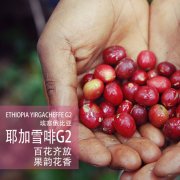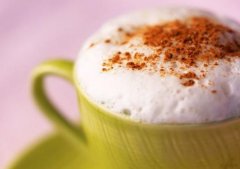The origin of coffee, the method of making and blending coffee, and pay attention to the details.

Coffee is the transliteration of English Coffee. It is a drink made from roasted coffee beans, ground into powder and then brewed.
(1) introduction to coffee
1. The origin of coffee
Coffee originated in Ethiopia in Africa, and there are many stories about its discovery, among which a legend accepted by most people is that about 3000 years ago, a shepherd saw a sheep grazing sheep eating the fruit of an unknown shrub. Excited, excited, running and jumping, so the shepherd also tasted the fruit, and the result was equally refreshed. Because of the local belief in Islam and the prohibition of alcohol, people used coffee instead of alcohol and quickly spread.
2. The origin of coffee
At present, coffee production in the world is mainly concentrated in the following countries and regions: Brazil, Indonesia, Colombia, Jamaica, Ecuador, New Guinea and other countries, of which Brazil is the most famous. Coffee was introduced into Taiwan in the second half of the 19th century, and then introduced into Hainan. Now it is grown in Yunnan, Guangdong, Guangxi, Fujian and other places in China. In particular, the quality of small-ingredient coffee in Yunnan is better, which is comparable to the world-famous coffee.
3. The composition of coffee
Coffee contains caffeine and volatile aromatic oils. although raw coffee and roasted coffee beans are different in composition, they both contain 5% of protein, 10% of fat, 14% of fat, 1.2% of caffeine and 1.8% of inorganic salts, carbohydrates, moisture, cellulose, multivitamins, fats, sugars and aromatic oils.
4. The efficacy of coffee
Coffee drinks are made from coffee bean extract. Coffee has high nutritional value, moderate drinking can help digestion, invigorate the spirit, quench thirst and prevent heat, eliminate fatigue and other functions, widely loved by people, especially European and American people regard it as an indispensable part of daily life.
(2) the production of coffee
1. Roasting of coffee
Roasting is an important process of making coffee. Roasting is to stir-fry the coffee beans, but the time should not be too long. There are three kinds of roasting: light roasting, cinnamon roasting and thick roasting. Roasted coffee beans make the aromatic oil dissolve in water and give off a fragrance, but some of the fragrance evaporates away. At present, it is more popular to roast coffee beans quickly with charcoal fire, which can make the aroma of coffee basically non-volatile.
2. Crushing and mixing of coffee
The roasted coffee beans are fragrant and fragrant. Ideally, the coffee beans are ground before each drink, so the flavor is better. Generally speaking, coffee with fine grains after grinding has a strong flavor, while coffee with coarse particles after grinding is fragrant. In order to make the coffee strong and fragrant, the fine coffee powder can be mixed and mixed to drink.
3. The blending of coffee
In restaurants or coffee shops, there are two common coffee blending methods: distillation and electric coffee pot.
(1) Distillation method
The coffee brewed by distillation not only retains the original delicious flavor of the coffee, but also can be seen clearly from the transparent glass pot. When making coffee, put the coffee powder in the upper pot and the water in the lower pot, heat the kettle with alcohol lamp or gas, wait for the water to boil, raise all the water in the lower pot to the upper pot, turn down the fire, gently stir the coffee powder, and then remove the fire. When the coffee in the upper pot gradually flows into the next pot, it can be poured into the cup to drink.
(2) the method of flushing and adjusting the electric coffee pot
Put the coffee beans in the blender to grind, then add ice water to the water tank in the electric coffee pot, close the lid and turn on the electricity, that is, start the process of automatic flushing, filtering and dripping into the pot below.
(3) other factors affecting coffee making
1. Water quality: like making tea, coffee must pay attention to water quality. Water containing large amounts of iron and alkaline hard water should not be used. The most ideal water should be distilled water. In addition, there are certain requirements for water temperature, the water temperature should be between 80 ℃-90 ℃, do not use boiling water, otherwise it will increase the bitterness of coffee and reduce the quality of coffee.
2. Soaking time
As coffee contains caffeine and aromatic oil, soaking time should not be too long, usually soaking for about 2 minutes, too long soaking not only destroys the flavor of coffee, but also causes floating matter on the coffee liquid and makes the coffee turbid.
3. utensils
It is most appropriate to use glassware and ceramic utensils to make coffee. If metal utensils are used, it will oxidize, giving the coffee an unpleasant taste.
4. Dosage
The amount of coffee should be determined according to the size of the coffee particles and the preference of the coffee drinker. Usually fine powdered coffee is less than fine granular coffee, while coarse granular coffee is about 15% more than fine granular coffee. If you brew 40-50 cups of coffee with 500 grams of coffee, it is espresso.
(4) matters needing attention in coffee service
1. Choose high-quality coffee and do not store it in large quantities, otherwise it will affect the quality and flavor of the coffee.
2. The corresponding coffee brewing time is determined according to the thickness of coffee particles.
3. Choose high-quality water, and the ratio of water to coffee should be appropriate. Usually put 100 grams of water for every 10 grams of coffee.
4. Coffee had better be boiled and drunk, otherwise it will affect the taste of coffee and make it lose its aroma.
5. Carefully clean the equipment for making coffee, otherwise it will produce a bad smell.
6. The quality of cream will also affect the quality of coffee. The better the cream, the more it can blend with the aroma of coffee.
Important Notice :
前街咖啡 FrontStreet Coffee has moved to new addredd:
FrontStreet Coffee Address: 315,Donghua East Road,GuangZhou
Tel:020 38364473
- Prev

Yega Coffee aristocratic Coffee from Ethiopia
Yega Xuefei is a small town, 700-21000 meters above sea level, synonymous with Ethiopian boutique coffee. It has been a wetland since ancient times. The ancient saying "Yirga" means to settle down and "Cheffe" means a wetland. The mode of production and flavor of coffee here are so outstanding that Ethiopian coffee farmers compete to be proud of the flavor of their coffee, making it the best in Africa.
- Next

The ancients drank tea and played "pull flowers", which far exceeded the modern coffee skills.
Cappuccino, popular in the 21st century, pays special attention to pulling flowers, to pull into a variety of patterns, heart-shaped, rose-shaped, or pull out two connected hearts, or pull out the five petals of plum blossoms, in a variety of ways, to name a few. In fact, people in the Tang and Song dynasties played the game of pulling flowers more than a thousand years ago, and their skills are far better than those in these modern cafes. The tea ceremony in Tang and Song dynasties is
Related
- Detailed explanation of Jadeite planting Land in Panamanian Jadeite Manor introduction to the grading system of Jadeite competitive bidding, Red bid, Green bid and Rose Summer
- Story of Coffee planting in Brenka region of Costa Rica Stonehenge Manor anaerobic heavy honey treatment of flavor mouth
- What's on the barrel of Blue Mountain Coffee beans?
- Can American coffee also pull flowers? How to use hot American style to pull out a good-looking pattern?
- Can you make a cold extract with coffee beans? What is the right proportion for cold-extracted coffee formula?
- Indonesian PWN Gold Mandrine Coffee Origin Features Flavor How to Chong? Mandolin coffee is American.
- A brief introduction to the flavor characteristics of Brazilian yellow bourbon coffee beans
- What is the effect of different water quality on the flavor of cold-extracted coffee? What kind of water is best for brewing coffee?
- Why do you think of Rose Summer whenever you mention Panamanian coffee?
- Introduction to the characteristics of authentic blue mountain coffee bean producing areas? What is the CIB Coffee Authority in Jamaica?

